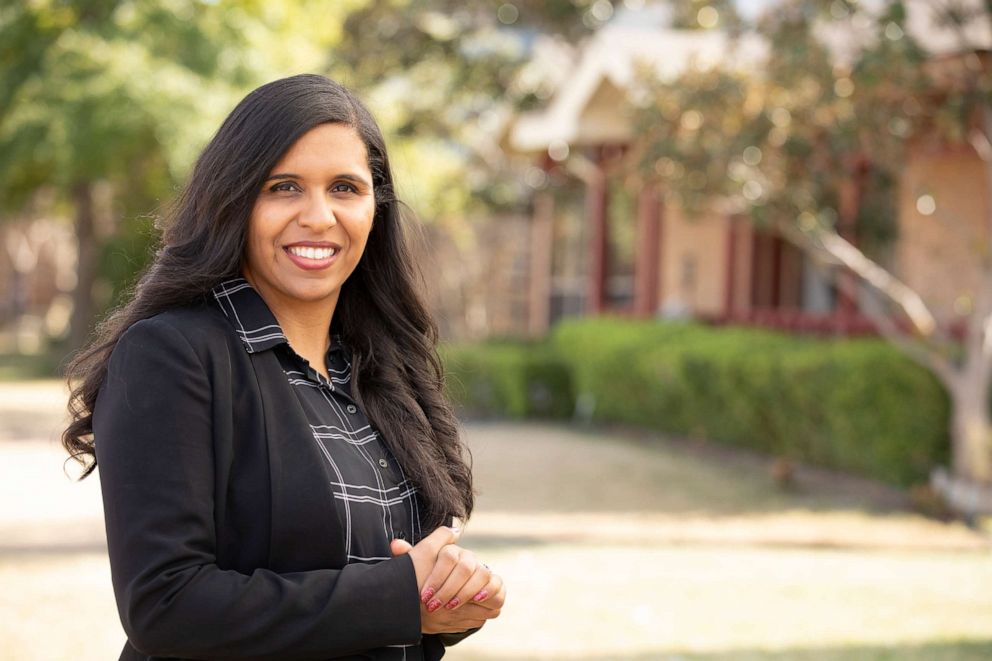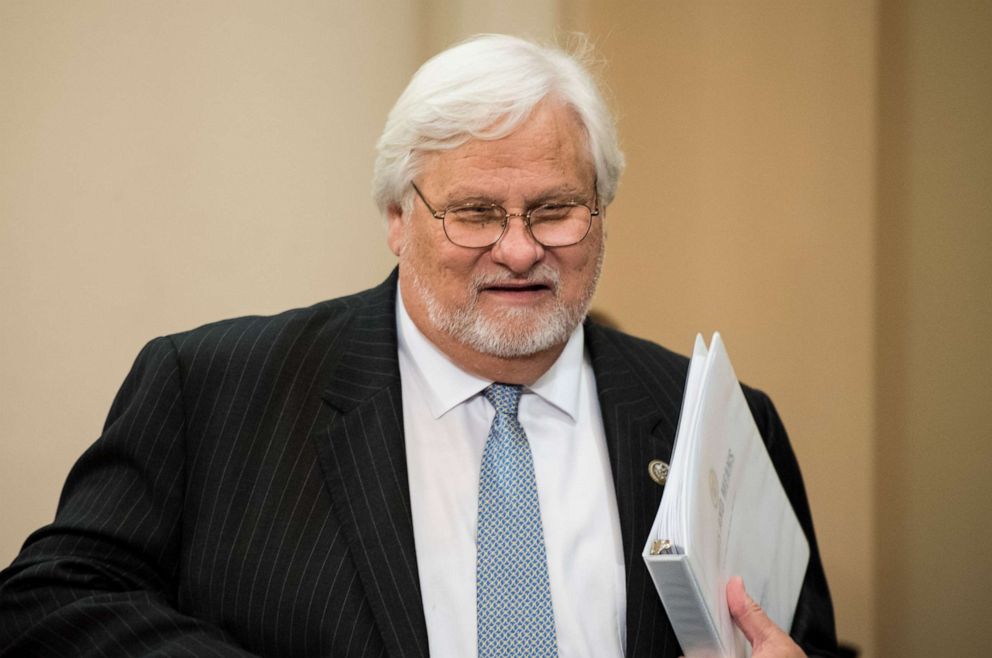Democrats look to Texas suburbs to trace a 'roadmap' for courting a changing electorate
Texas suburbs are shaping up to be the center of the fight for the House.
In the suburbs between Dallas and Fort Worth, a progressive Democrat fresh off a win in the primary runoff on Tuesday, is leaning on minority support to bolster her campaign against a Republican backed by President Trump.
A Democratic nominee in a suburban Houston district reaching into the Austin suburbs is seeking a different outcome in a rematch against a top party target.
And in a toss-up district covering some of the most diverse suburbs in the state in Fort Bend County, a Democrat vying to be the first person of Hindu faith and first Asian American to serve in the Texas congressional delegation is facing off against a sheriff in his second attempt at the seat.
Finally, in the sprawling border district covering the San Antonio and El Paso suburbs, only seven votes separate the two Republican contenders, as Democrats anxiously await the results for their challenger.
On Tuesday night, some of the most consequential House races across the suburbs of Texas were (mostly) settled. The contests are shaping up to be at the center of an intense fight for the majority in the lower chamber -- bringing to the fore an expanding electorate for Democrats in territory that has long been an anchor of Republican support.
"This is the reality of where we are now," Lucinda Guinn, the executive director of the Democratic Congressional Campaign Committee, House Democrats’ campaign apparatus, said in an interview. "Texas as the centerpiece in the House battlefield ... there are so many opportunities in one state for us."
Nearly two years after Democrats scored two significant victories in the Texas suburbs, when Colin Allred flipped a seat in the Dallas suburbs and Lizzie Pannill Fletcher clinched a win in the Houston suburbs, the party is increasingly bullish on Texas this cycle, believing their current slate of candidates to be competitive statewide, and in areas where they fell short the last time around.

In 2018, as Democrats across the country were flipping districts in what could be characterized as traditional suburbs -- middle to upper-middle class, majority white enclaves -- a slightly different story played out in Texas' 22nd district, south of Houston. The district, encompassing the cities of Pearland and Sugar Land, is among the most diverse suburban tracts in the nation -- roughly 27% Latino, 19% Asian and 15% Black, according to Census Bureau estimates, standing in stark contrast to the heavily gerrymandered districts just north in Houston, that snake their way through the city on racial lines.
Two years ago, Republican Rep. Pete Olson defended the onetime conservative stronghold (once represented by GOP House Majority Leader Tom DeLay) against Democrat Sri Preston Kulkarni by five points, the narrowest margin in a decade. But like many of his colleagues anticipating competitive 2020 races, Olson announced his retirement in 2019, stripping the GOP of the advantage of incumbency and paving the way for the 22nd to be among the most competitive contests in the nation.
The 22nd Congressional District is one of about half a dozen seats in the Democrats' crosshairs this year, and its Republican primary is also one of 15 runoff elections that took place on Tuesday, four months after March's primaries.
In the 24th Congressional District, which sits outside Dallas and Fort Worth, with the Democratic nomination in hand, Candace Valenzuela, a local school board member who could become the first Afro-Latina in Congress, is turning to a competitive matchup against Beth Van Duyne, a former mayor of Irving who landed Trump's endorsement. Both are aiming to replace retiring GOP Congressman Kenny Marchant, who enjoyed comfortable margins in his reelections until 2018 when he edged out a win by only three points.
Mike Siegel, a civil rights attorney and the 2018 Democratic nominee, is readying his campaign for a repeat matchup against GOP Rep. Michael McCaul in the 10th Congressional District. Trump won the suburban Houston district that also extends into the Austin suburbs by nine points four years ago, and Democrats are hoping for a win four months from now after McCaul only won reelection by five points in 2018.
In the closely watched 23rd Congressional District, one of the seats most primed for Democrats to flip, the Republican primary between Tony Gonzales and Raul Reyes Jr. is still outstanding. The eventual winner in the primary will square off against Gina Ortiz Jones, the 2018 Democratic nominee and a former U.S. Air Force intelligence officer, in the fall to replace GOP Rep. Will Hurd, who announced he’s not seeking reelection.
Democrats' more aggressive approach is backed by internal polling for House Democrats that shows the party gaining ground in the Texas suburbs, according to a Democrat familiar with the races.

Unlike urban and rural centers, the suburbs represent parts of the country that aren’t fixed, but instead are a distillation of impressionable voters not tied to one party. Suburban voters, some of the most coveted blocs for candidates in competitive races, reflect the state of America’s sentiments, providing the pulse of the country.
"The suburbs are a tough place because the suburbs are full of people who are sort of used to expressing themselves, being taken seriously, having other people listen to their opinions," said Cal Jillson, a professor of political science at Southern Methodist University in Dallas. "So when circumstances are changing, and your opinions are changing, you expect to be able to express that rather than toe a party line."
And the suburbs in Texas, a state Trump carried by nine points, which is less than the 16 points by Mitt Romney, the 2012 Republican nominee, or the 12 points by John McCain, the 2008 GOP nominee, are some of the last urban outskirts to show a shift across the country, drawing both parties into a fierce battle for the purple territory.
"It is very important to recognize that the suburbs of Philadelphia are very different than the suburbs of Dallas or Houston. Those are 10 points more Democratic than the suburbs of Dallas, Houston and San Antonio," Jillson said. "They’re tipping years later than the suburbs in northern cities that have a similar demographic makeup ... It just takes a little longer in the suburbs of Dallas and in Houston and Atlanta than it does in the northern suburbs."
For Democrats, their enthusiasm to build on their success in 2018 saw a significant national boost this week, when presumptive Democratic nominee Joe Biden’s campaign poured cash into running ads in the state, largely focused on the coronavirus pandemic -- the first time the Biden campaign has targeted Texas.
Since Trump took office, the suburbs, a large swath of the GOP’s base, have been drifting from the party, a revolt driven by an opposition to Trump’s demeanor and divisive rhetoric.
The president’s overtures to white suburban voters as recently as this week, when he said that Biden’s nomination will bring "the destruction of the suburbs" and "the suburban destruction will end with us," appear to be further fanning the flames of racial tension and run counter to the Democrats' pitch that is pulling these voters in, according to recent polling.
House Republicans, for now, are dismissing concerns about potentially losing support in the suburbs, casting Democrats as too liberal to win over these areas.
"Texas Democrats have nominated a slate of socialist candidates who are unelectable in these conservative districts," said Bob Salera, a spokesperson for the National Republican Congressional Committee. "Democrats’ support for socialist agenda items like the oil-and-gas killing Green New Deal and socialized medicine is completely toxic to voters, and Democrats are delusional if they think they can sell these policies in Texas."
But Democrats are keenly aware of the opportunities in the suburbs, particularly in massive Texas. "They are rejecting and revolting against the Republican Party at a rapid clip," Guinn said. "This is something that we have been watching since 2016 so I think you're going to continue to see a lot of time and attention in Texas."
Texas Democrats argue that the diversity of these areas and a revulsion to the divisiveness from Trump's GOP is driving suburbanites into the party's waiting arms.
"When it comes to the suburbs in Texas, I think we are seeing massive change," Manny Garcia, the executive director of the Texas Democratic Party, told ABC News in an interview. He added that the current "phenomenon" in the suburbs of "college-educated suburbanites" moving away from Republicans towards Democrats, which began in 2017 and continued in the 2018 midterm elections and throughout statewide elections in 2019, is two-fold: "This is part of Donald Trump destroying the brand of the Republican Party" and "the changing nature of who lives in the suburbs."
In the 2018 midterms, 75% of Democrats’ gain came from predominantly suburban districts, according to FiveThirtyEight. In 2019, in statewide and local contests in Virginia, Kentucky, Iowa and Pennsylvania, Republicans saw an erosion of support among suburban voters, and women in particular, and the results were costly for Republicans.
Political experts, too, say that the suburbs are in play due to changing demographics.
"It is a demographic evolution of the inner-ring suburbs and increasingly, the outer-ring suburbs as well, where they are more diverse," Jillson said, highlighting Marchant’s district as one that was once majority-white but is now majority-minority and is "ready to tip."
"The urban core of the major cities in Texas are blue, and the inner-ring suburbs are increasingly purple tending toward blue, and the next set of suburbs are still purple and that's where the fights are this time," he said.

When Olson announced his retirement from his seat, Rep. Tom Emmer, R-Minn., and chairman of the NRCC, maintained that it "will remain a Republican district for the foreseeable future," but Kulkarni and his team are leveraging the region's diversity, and see an opportunity to preview how such districts can be won in a post-Trump world.
"The 22nd district is basically the roadmap of what Texas is going to look like over the next years and decades," said Allen Chen, Kulkarni's campaign manager. "It's going to become increasingly diverse. It's still a moderate district, but it's really not what you think of when you think of a traditional Texas suburb."
Kulkarni's campaign's multicultural outreach may draw an even sharper contrast now that it has its opponent. On Tuesday, Fort Bend County Sheriff Troy Nehls won the Republican Party's runoff, providing a potential opportunity for voters to reexamine the relationship between law enforcement and people of color -- an issue typically associated with urban districts, rather than the suburbs, but one upon which the Kulkarni campaign appears ready to pounce.
"This is somebody who says he will listen to minority communities and be partners with them," said Chen of Nehls, who, in June, joined Trump in calling for the utilization of the military to address protests that had grown violent. "There's a clear contrast, and instead of him talking about how his department is going to improve, instead of him laying out a roadmap of trying to seize the moment and be a better leader for the community, he just gave himself a pat on the back and said, 'Hey, this is the stuff we're doing already.'"
This realignment in the suburbs could continue in the fall, and would be particularly damaging in battlegrounds across the electoral map, where a small shift in support could sway a state.
"As Trump bleeds support, Republican Senate candidates, Republican House candidates have less lift under their wings," Jillson said, adding that Democrats must have a "controlled aggression" in Texas, and cautioned against being too ambitious, a stark reminder of the outcome of 2016.




